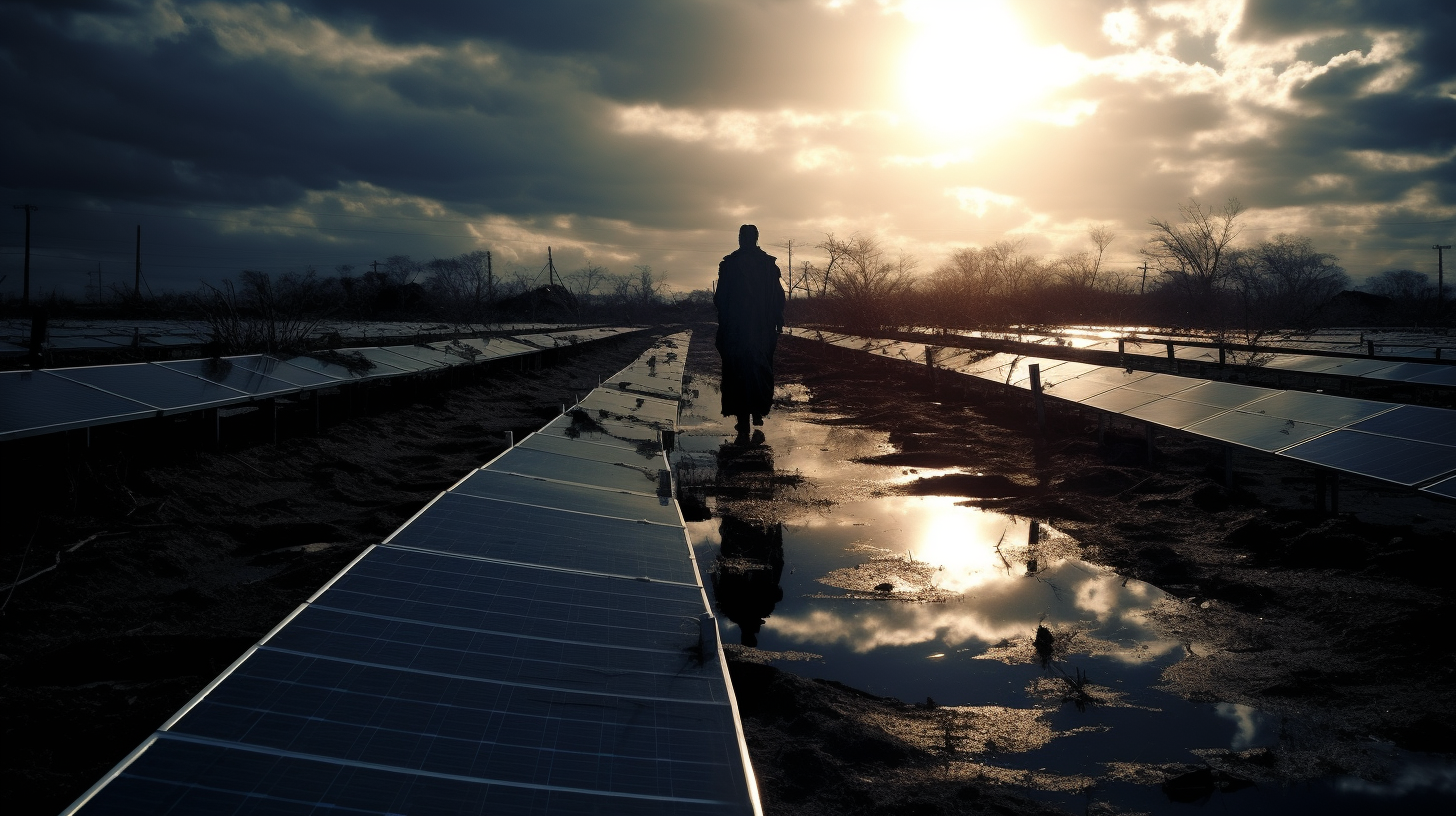In the shadow of what was once a luminous beacon of hope, now stands a field of decay—the Solar Graveyard. Amidst the carcasses of photovoltaic panels and rusted promises, it is hard to imagine that this wasteland was designed to harvest the sun’s power and revolutionize our world. This is the manifest legacy of our generation’s ambitions, a testament to a dream that soared as high as Icarus, only to plummet into a sea of negligence and despair.
Each rusted solar panel is etched with the misplaced optimism of a society that believed technology alone could stem the tide of climate disaster. Yet here we stand, our renewable dreams drowned by the deluge of our own environmental sins. The air, dense with the soot of countless unchecked emissions, casts a permanent pall over the sky, smothering the sun’s once-generous rays.
One might recall ‘Mirage of Renewable Energy in a Land of Permanent Haze,’ where we grappled with the futile advancements in green technology that floundered in contradiction. In this sea of mechanical corpses, the harrowing realization dawns that our salvation machines needed saving themselves. Discarded, in a pile of obsolescence, they serve as relics to a future that will never come.
Not far from the irony of our solar dystopia lie the remnants of once-thriving metropolises, confronted in ‘Sunken Skylines: The New Atlantis Quest’. The perverse parallel here is palpable: just as our skylines have succumbed to watery graves, so too have our clean energy aspirations perished amidst the neglect. ‘The Vanishing Act of Rivers’ and ‘The New Atlanteans’ resonate as somber eulogies for the natural and the man-made, both of which we have laid to waste.
Experts projected that solar farms would power nations, clean and boundless. Yet, they remained tethered to a blighted power grid, reliant on the same toxic energy they sought to displace. This landscape of broken glass and twisted metal frames now reflects a morose metaphor for the shattered vision of a world, once ripe with potential.
Whispers of a regenerative culture arise from the ruins, yet they falter against the harsh winds of an irreversible horizon. The solar graveyards do not merely signify lost resources; they bear witness to a lost ethos—the crux of an age where we saw the cliff’s edge and yet asked, ‘How much closer can we tread?’
The last custodians of the graveyard wander among the reflective surfaces that no longer catch the sun. Their tales speak not of success and sustainability, but of struggle, decay, and how the golden rays of the sun are smothered by the handprints of our neglect. Here may lie the cautionary tale for the finality of our age—could anyone harness the courage to listen?
The searing question thus remains: What may rise from the somber piles of our failed endeavors? In a world that has already lost so much, is there a chapter yet unwritten that foretells a resurrection of purpose, or simply an epilogue chronicling the echoes of a drowned energy dream?
